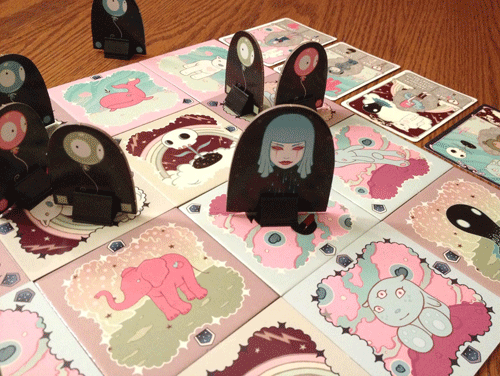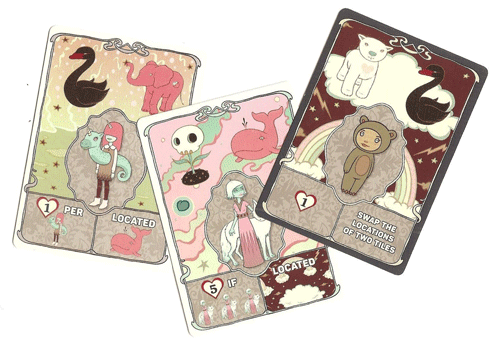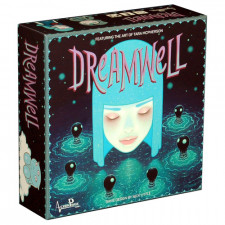Dreamwell Review
on Feb 1, 2017
We’ve all had that one dream about a road trip to Toledo with a childhood friend you haven’t seen in twenty years, when all of the sudden your bicycle gets a flat. Of course, that means you’re going to miss presenting the big project at work, which has you stressed, not to mention your eyebrows are uneven and need trimmed because your beautician spiked and frosted them, which is all the style these days, but totally not you. Luckily Howie Schmidt (you know, the guy who invented the sock) happens by. Relieved, you go back to painting your window eaves until you find out your mom is running off with Howie to Hawaii. You finally lose it completely when they invite you to come along and be the best man. Darn fortune or not. Wait, am I the only one who’s had this dream?
Look, even if you don’t own up to that one, we all know you’ve had some bizarre, disturbing, surreal and “I would rather not talk about that one†dreams. We all have. And Dreamwell takes you there. Its odd and fantastic production is the first thing that strikes you.
Dreamwell features illustrations by Tara McPherson, specifically her Gamma Mutant Space Friends line of artwork and obscure collectibles. If you’ve a non-artistic bent like myself, you’re altogether unfamiliar with this brand, will have to google it, and then struggle to adequately describe the combination of chromatically-challenged animals, fictionalized creatures and Teletubby lookalikes on inventive backdrops. They are all whimsical and creative, if not decidedly peculiar. Perhaps even psychedelic? But if it’s hard to interpretively grasp, it certainly fits with the design’s theming. If nothing else, art is very personal in the ways people create and/or perceive it- much like our dreams.

The Nightmare token won’t disturb your dreams too much.
The dreamwell itself comprises sixteen modular tiles in a 4x4 grid. Each depicts one of four environments and one of eight creatures. They also have arrows on one or more edges indicating which direction you may journey off that tile. Players manipulate two personal standees about this darkly pastel wonderland attempting to find their friends based on cards which illustrate an environment and two creatures. Between your pair of pawns on the board, you must occupy tiles matching a friend card’s environment and creatures.
Finding friends awards victory points. Even Dr. Freud can get behind that. Because generally we struggle to find meaning in our own dreams, often after bolting awake in a cold sweat and breathing heavily. Alas, the points these friends provide are rather random. A handful reward them straight up, while most others require you to collect specific friends or sets. Some are clearly more valuable than others. So the scoring method is arbitrary, but that’s fine given the design’s dreamy setting. It would be nicer to connect more with the characters, however. The brand is largely anonymous due to its niche exposure. So instead of looking for Cosmo or Ion, you’ll just say “the pink whale†or “the kid in the bunny suit.â€
Dreamwell employs straightforward action selection to accomplish your search. On a turn you take three actions in any order, repeating any if you’d like. You can move a pawn, rotate or flip a tile, draw a friend card from the display or deck, replace the four-card display or locate a friend by playing one of your cards that matches the tiles’ background and creatures on which your pawns reside. If you can move from one tile to the next through aligned arrows then you can continue further in the same action (if able), floating fairly quickly about the dreamscape. There is also a Nightmare token you can move. It knocks other pawns out of any tile it enters and players may not otherwise move into a tile it is haunting, nor may they rotate or flip it.

Instead of Stella & Flux, you’ll be saying, “I found unicorn girl and unicorn worm.â€
The first to locate ten friends triggers the endgame. While the ruleset is a breeze, the challenge lies in efficiently managing the board, and speed is not necessarily the sole consideration. Collecting specific friends is important for creating sets. Each card also provides a one-time bonus that could prove handy enough to snatch. Manipulating the Dreamwell is more a science as there’s a good balance and scripted formula to the double-sided tiles. You know exactly what you’ll get when flipping one. Creating the fastest paths and card matches, and grabbing cards that exploit your locations on the board, create a pleasant logic puzzle that is rewarding, yet not overly taxing.
While navigating this riddling race, the experience as a whole is lazily easy-going and breezes right along. Dreamwell is suited to kids, family and casual gamers - and therein lies its greatest appeal. Indeed what I’ve covered here is the “advanced†variant. You can play without tile flips or the nightmare element but I do not hesitate in recommending the advanced version from the start. The setting and complexity won’t serve as standard fare for hardcore hobby gamers when playing amongst peers. For all others it’s a charming and congenial dream. It may look peculiar, but at least you don’t have to worry about mom running off with the Sock King for a sugar daddy.

 Customer Support
Customer Support  Subscribe
Subscribe 




 Account
Account  Wishlist
Wishlist 

